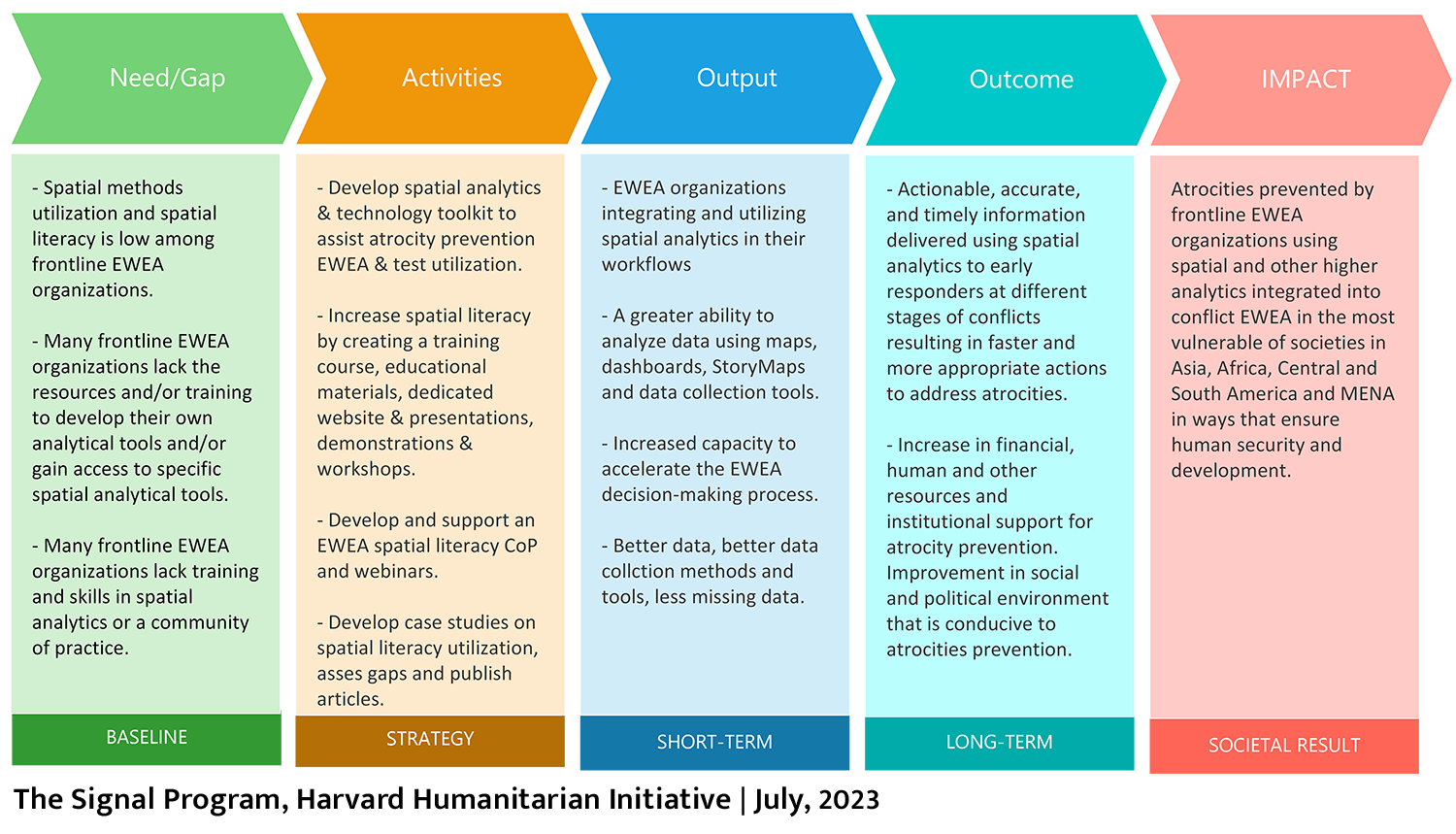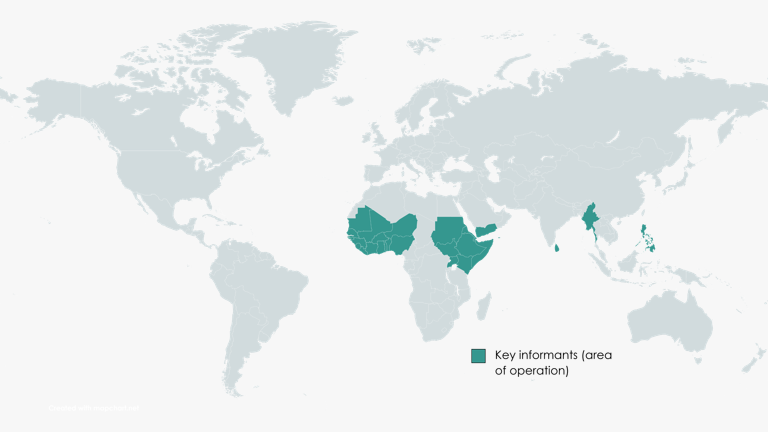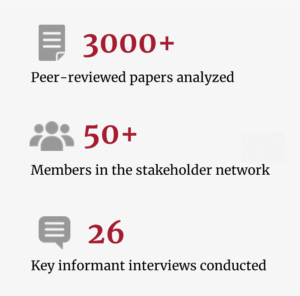- Mass atrocity prevention, early warning, and response programming have evolved significantly over the past decade to include remotely-sensed data, social media interrogation, and complex logistic regression models to inform funding, policy, and programmatic design.
- Despite these increasingly robust methods, the produced information is often aggregated to the country level of spatial resolution and/or longer (yearly) timeline predictions, making immediate deployment recommendations vague and undermining rapid, community-targeted programming. The routine use of various data sources by local and global organizations remains fractured and variable.
- With this in mind, the Signal Program looks to strengthen the efficacy and efficiency of early warning/early work through strategic, evidence-based, and ethical integration of spatial methods, field methods, and novel analytic tools into existing EW/EA decision-support mechanisms and workflows.
- It further seeks to understand the way in which multiple layers of spatially-explicit data –whether they are derived from socio-economic, political, environmental, infrastructural, resource domains, or remotely-sensed, ground-discovered, open-source, or historical data platforms- can be utilized in various spatial models to create rapid, novel insights for the effective, efficient, and ethical targeting of early warning/early action programming.
Working objectives in 2023 and 2024
- Create a community of practice for EW/EA practitioners, technology developers, and academic researchers for the sharing of ideas across these groups regarding improved spatial literacy, technical capacity, and resources, data availability, quality, and protection as well as data analysis, and dissemination of warnings, ethics, security, and the data to impact gap(s).
- Develop a series of educational products to build spatial literacy and capacity within organizations undertaking atrocity prevention EW/EA work.
- Create a spatial toolkit for atrocity prevention decision-makers that integrates into existent atrocities prevention EW/EA mechanisms and workflows to address the data-to-impact gap.
Theory of change

Gap analysis
To understand the needs of programmatic decision-makers working in EW/EA that could be addressed by spatial data, analytical methods, and products to improve the impact of EW/EA activities on atrocity-affected or potentially affected communities, the Signal Program conducted extensive research which included a literature review, practitioner interviews, and an exploratory working seminar.


Outcomes
- No standardization across the academic or programmatic communities regarding conceptual causal models, indicators, data streams, or analytical methods for conflict and/or atrocity prediction/monitoring.
- All peer-reviewed papers on conflict and atrocity prediction, monitoring, and prevention were published by researchers affiliated with institutions in high-income countries, while the studies were largely set in low- and middle-income countries.
- No publication that advocated for any specific analytic method to predict, monitor, or prevent conflict or atrocity reported the uptake or use of that method in programming or policy decision-making, and none of the publications reported any impact of their methods.
- There is a significant gap between what is being developed by researchers and technologists in high-income countries and what methods are being utilized by community, local, or regional EW/EA organizations.
- There is an appetite to increase technological and methodological sophistication in many organizations, but a lack of spatial/statistical literacy and capacity (both technical and human) are significant barriers to adoption.

